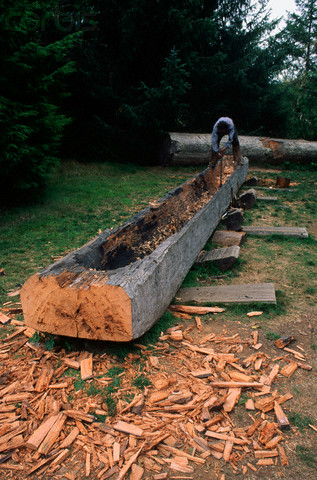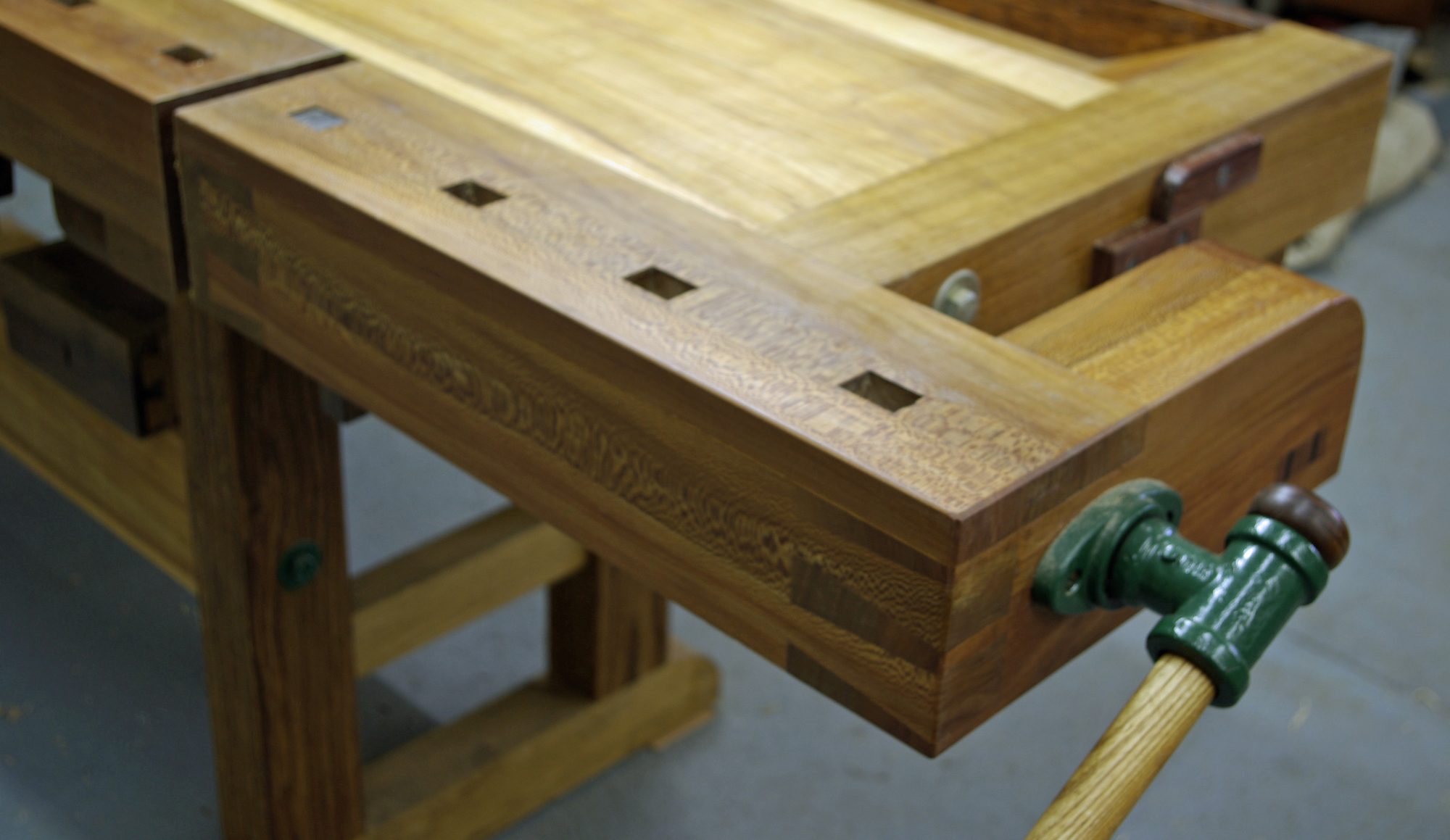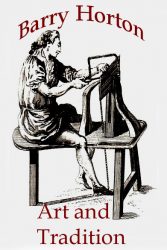My Spirituality in woodworking post is the abridged transcript of a talk which I gave at a London Conference on the building force of Love/Wisdom in the creative arts. It may seem an odd subject for a website such as this to post. However, it is a reflection of the way I approach my work and for that reason alone may be of interest. More importantly it may lead you to look differently upon all crafts, your own work included. By doing so it is my wish that it may lead you to greater enjoyment from them and from life.
Spirituality in woodworking does contain some esoteric reference, but please do not let this put you off if your own beliefs lie elsewhere. Whatever one’s belief system may be and I include atheism as a belief system. One can agree that there is a common will to good that binds the whole of humanity, it is to this quality that I would draw your attention.
 Lets us for a moment take a subjective look at craftsmanship, particularly the qualities that we humans may imbue into our creative work. We will examine the way in which Love and Wisdom influences all those things that we humans make, the things we make with our own hands in particular, and this could be absolutely anything at all, the only criteria is that we begin with an idea, a mental picture, or vision, which we then
Lets us for a moment take a subjective look at craftsmanship, particularly the qualities that we humans may imbue into our creative work. We will examine the way in which Love and Wisdom influences all those things that we humans make, the things we make with our own hands in particular, and this could be absolutely anything at all, the only criteria is that we begin with an idea, a mental picture, or vision, which we then  proceed to make manifest in some way or other. I will also talk about the creative process that we go through and the dynamic relationship of all those elements that we collect and fuse together to complete our creation. Most importantly I wish to draw attention to the way in which we may consciously act as a conduit for the ray of Love Wisdom and therefore determine the inner quality of the finished work.
proceed to make manifest in some way or other. I will also talk about the creative process that we go through and the dynamic relationship of all those elements that we collect and fuse together to complete our creation. Most importantly I wish to draw attention to the way in which we may consciously act as a conduit for the ray of Love Wisdom and therefore determine the inner quality of the finished work.
To help illustrate these points, I shall use the art of furniture making as a backdrop. Simply because that it is the area of creativity that I am most familiar with and it will easily  act as a metaphor for most other forms of creativity and with a little imagination daily life as well. Especially if we first take a moment, to look past the mechanical aspect of furniture making, or woodworking in general for that matter, to observe what actually happens when an item is made from wood or any other material. The first noticeable thing or even the most noticeable thing that the craftsman can be seen to make, is a large pile of chips or sawdust. It could be said that he or she is a reductionist, although not in the philosophical sense, simply that the woodworker by various means of reduction alters the nature and form of the unprocessed timber to resemble his or her imagined idea. The craftsman by skilful and discriminative cuts removes that which hinders or veils that idea from being manifest; this process then is following a spiritual principle. Through conscious mental effort, the creative mental energy of the maker is worked out through various stages that manipulate substance and progressively allows a solid representation of his vision to take shape. In this instance, the process of manipulation is a trade that is also a learnt skill that takes a good number of years to acquire, a skill that is generally passed from master to apprentice.
act as a metaphor for most other forms of creativity and with a little imagination daily life as well. Especially if we first take a moment, to look past the mechanical aspect of furniture making, or woodworking in general for that matter, to observe what actually happens when an item is made from wood or any other material. The first noticeable thing or even the most noticeable thing that the craftsman can be seen to make, is a large pile of chips or sawdust. It could be said that he or she is a reductionist, although not in the philosophical sense, simply that the woodworker by various means of reduction alters the nature and form of the unprocessed timber to resemble his or her imagined idea. The craftsman by skilful and discriminative cuts removes that which hinders or veils that idea from being manifest; this process then is following a spiritual principle. Through conscious mental effort, the creative mental energy of the maker is worked out through various stages that manipulate substance and progressively allows a solid representation of his vision to take shape. In this instance, the process of manipulation is a trade that is also a learnt skill that takes a good number of years to acquire, a skill that is generally passed from master to apprentice.
The skill acquired is in essence that of energy direction to achieve a desired result, firstly there is the destroying energy of the first ray breaking down the old form, which is then balanced by the building energy of the second ray. A line of energy is constructed directly linking the vision to the completed form. When the craftsman consciously brings soul quality into this equation a vibratory rapport is established between all elements and his intention, something magical happens; beauty and livingness start to appear in his work.
Let’s just for a moment focus on the latter part of this statement, while at the same time reminding ourselves that the dense matter the craftsman is working with, is not in reality a  principle. It is only a solid form of energy that can be utilised manipulated and caused to respond to the creative principle. Also that all forms of energy have a positive and negative aspect, and it is the correct proportion and balance of these two opposites when measured with love that gives birth to beauty, that is animated by livingness that in turn are displayed in some form of utility. In utility beauty is given purpose, beauty alone, just for
principle. It is only a solid form of energy that can be utilised manipulated and caused to respond to the creative principle. Also that all forms of energy have a positive and negative aspect, and it is the correct proportion and balance of these two opposites when measured with love that gives birth to beauty, that is animated by livingness that in turn are displayed in some form of utility. In utility beauty is given purpose, beauty alone, just for  beauty’s sake would be redundant and in contradiction to the whole of nature, in nature everything has a use, no energy is wasted.
beauty’s sake would be redundant and in contradiction to the whole of nature, in nature everything has a use, no energy is wasted.
Mankind, blessed with freedom of choice, is not always conscious of this need to balance opposites and frequently ends-up getting it wrong; resulting in at best some form of nonsense or at worst a world catastrophe like climate change. The visionary first leader of the Shakers, Mother Anne Lee told her followers that “Beauty rests on Utility” and about a generation or so later William Morris famously said
“Have nothing in your house that you do not know to be useful, or believe to be beautiful” these ideas were later squared off by the modernists into the more industrial sounding “form follows function”
However, if in our imagination, we were to superimpose love-wisdom of the second ray over Morris’s and Lee’s notion of beauty and utility we would quickly realise that beauty is a manifestation of love and that utility is wisdom in action. We can clearly see that these two aspects cannot be separated or thrown out of balance without a negative effect on quality or fitness for purpose. With conscious thought and active love a craftsman may endeavour to combine the elements of love-wisdom with his own unique soul quality to form a triangle of force that works out through the agency of his skill and knowledge in the desired form.
This brings me back to the chips and sawdust of shaping timber to resemble one’s vision, for the most part in the life of a furniture maker; this will mean making an interpretation of a clients need for some form of utility into solution. The creative process will begin as the maker finds a mental framework of solution to meet that need, followed by a rendering of detail, ranging from timber choice to final finish. By holding a mental picture of his client’s need and the client’s future use and pleasure as he or she discovers the beauty contained within that utility, the maker is adding a tangible yet subjective dimension to his creation, which is for him as yet still only an idea. We are told that “The unfoldment of the sense of vision and of the sense of synthesis, through visualisation, will lead to a sense of livingness in form”. If the craftsman can capture even a hint of that synthesis, he has introduced living energy into his idea.
The first physical form that this idea will take will probably be a sketch, followed by a drawing with dimensions and annotations. Personally I usually make a water colour sketch for the client and later make a full size drawing for the workshop from which I check measurements and use as reference. This frees up the mind, avoids silly mistakes and allows me to concentrate on the more ascetic aspects such as timber selection.
A woodworker will select timber with the same care and attention that he will use in making, while he is sorting through the woodpile, he will be asking himself questions. Like, will this plank make a good door panel? Or should I use it for the side and look for something with more character for the doors and top? Has this timber seasoned enough, is it stable? And so on, the questions are endless. Finally once the timber has been selected, it’s dimensioned, the joints are cut, all the other little details completed, then the whole is finish planed, and then assembled and polished, each process will have been accompanied by more questions and mindful fussing and checking to see if everything is right.
Now it would be more romantic if I were to say that all the operations were carried out by hand, but in this day and age this is not really practical, no one could really afford the cost of this and one needs to remain competitive if one is to stay in business. Therefore, all heavy and laborious work really needs to be carried out by machines. Although in a small independent workshop the maker will be doing all the pushing and pulling himself, so it is still a kind of hand process. However, no good furniture maker would ever dream of leaving any machine marks on his work; these will all be meticulously planed off by hand. It is at this point that the piece of furniture starts to develop a unique character and quality that is imparted by the maker’s hand; because the craftsman is working to the rule of risk, in contrast to the imposed monotony of an assembly line. Working by eye, each of his actions may leave a slight imperfection on the surface, but each cut will have been expertly and skilfully wrought, leaving each detail crisp and well defined. Each pass of a well tuned plane takes a gossamer thin shaving that leaves behind a surface that is imperceptibly refracted. The light plays across a surface prepared in this way that no other process can match. Here the maker has imparted a visual livingness that may give pleasure for centuries. DH Lawrence was perhaps thinking of this when he wrote these words:
“Things men have made with wakened hands, and put soft life into
are awake through years with transferred touch, and go on glowing
for long years.
And for this reason, some old things are lovely
warm still with the life of forgotten men who made them.”
From his writing, I think Lawrence had also recognised another even more important quality that a maker can impart into his work. Through his transferred touch and projected thought forms which literally soak into his work, his work piece begins to take on a special vibratory resonance. Something of the essence of the maker is captured in the very fabric of his creation. This aspect is recognised by a number of traditional Japanese disciplines, where it is believed that part of the craftsman’s soul resides in his work, co-existing with his dedication throughout the life of the object
Those who are sensitive will easily recognise this attribute in many different works, both old and new. For it is quite evident in the case of a fine piece of hand made furniture, that it displays some kind of special magnetic appeal to people, they are drawn towards it,  almost certainly they will be inclined to run their hand across its surface and caress it. This does not happen with mass produced furniture, of course it may be admired, but I don’t believe I have ever seen such a piece caressed.
almost certainly they will be inclined to run their hand across its surface and caress it. This does not happen with mass produced furniture, of course it may be admired, but I don’t believe I have ever seen such a piece caressed.
I will attempt to define what is taking place between the maker, his tools and his work that causes this remarkable effect. Earlier we considered some of the mental processes involved in creativity, now I would like to talk a little about the more practical, physical process that allows that creative thought to work out into a finished object. To begin with the maker his tools and work need to be in balanced harmony, that is to say a certain dynamic of sensitivity needs to exist between them. Above all else the maker should have love in his heart, love for his work, without this love nothing very special is going to happen. Love for his client, even when they are being difficult, which in my experience is very rare, because a client must place a great deal of trust in a craftsman and often part with a considerable amount of money, based solely on subjective reasoning. It is a marvellous thing this trust and is I believe part of what goes into the work. The craftsman must also have love for the timber he is working, it is after all a precious thing and I do not mean its cost. The now well seasoned, cut and planked timber was once a majestic tree that had sustained myriad life forms, created the air we breathe and  conditioned the soil on which it stood, it provided shade for all who rested below it and added beauty to the landscape. That tree may be older than the craftsman by several hundred years, yet they are both animated by the one life, the craftsman must know all this and show gratitude to his brother tree if he is to work with him in harmony. Nearly all woodworkers that I have spoken to recognise this sense of fraternity with trees, or nature in general, although each has had his or her own special way of expressing this kinship. The timber from that tree will become a teacher if one has a mind to learn from it, but first one must develop the right organs to listen. When you do, the timber will tell you how it best likes to be cut or worked, it will also tell you of its attributes. It might say, “Look, the grain on this part of me runs out, it is very decorative to be sure and would make an excellent drawer front, but if you use me for a leg it will end in disaster; the craftsman must listen carefully because the voice of the timber is very gentle and soft. A craftsman should also
conditioned the soil on which it stood, it provided shade for all who rested below it and added beauty to the landscape. That tree may be older than the craftsman by several hundred years, yet they are both animated by the one life, the craftsman must know all this and show gratitude to his brother tree if he is to work with him in harmony. Nearly all woodworkers that I have spoken to recognise this sense of fraternity with trees, or nature in general, although each has had his or her own special way of expressing this kinship. The timber from that tree will become a teacher if one has a mind to learn from it, but first one must develop the right organs to listen. When you do, the timber will tell you how it best likes to be cut or worked, it will also tell you of its attributes. It might say, “Look, the grain on this part of me runs out, it is very decorative to be sure and would make an excellent drawer front, but if you use me for a leg it will end in disaster; the craftsman must listen carefully because the voice of the timber is very gentle and soft. A craftsman should also  love his tools, especially those he has made himself, not in a covetous way, but in a way that will encourage them to respond to his touch. Just thinking that the tool he is using is a very fine tool that will bring the best out of the piece of wood on his bench is enough to align the maker with tool and work piece. In this way the tool becomes an extension of the maker’s hands as he focuses his knowledge and love on the work in front of him. The craftsman has become a channel through which the energy of the second ray of love wisdom may flow as he impresses his own unique quality into the finished piece.
love his tools, especially those he has made himself, not in a covetous way, but in a way that will encourage them to respond to his touch. Just thinking that the tool he is using is a very fine tool that will bring the best out of the piece of wood on his bench is enough to align the maker with tool and work piece. In this way the tool becomes an extension of the maker’s hands as he focuses his knowledge and love on the work in front of him. The craftsman has become a channel through which the energy of the second ray of love wisdom may flow as he impresses his own unique quality into the finished piece.
In past centuries, craftsmen and artists were almost totally responsible for the built environment which created a quality and character that lives on in many surviving examples that we still value today. We can not go back to these times nor would it be desirable to do so, mankind must continue to penetrate, discover and understand matter, but in doing so we should be mindful of the more subtle qualities that we as human beings need in our environment, that we may maintain our sense of reality and not become disoriented slaves to our own inventions. It is difficult for man to form a synthetic bond between himself and industrially processed surroundings; it’s as if the thread of living energy has been cut. Perhaps we should then be mindful of William Morris’s words and populate our surroundings with objects that are both beautiful and useful, objects that can help raise the human condition above mundane desire, and towards creative thought and creative living..
need in our environment, that we may maintain our sense of reality and not become disoriented slaves to our own inventions. It is difficult for man to form a synthetic bond between himself and industrially processed surroundings; it’s as if the thread of living energy has been cut. Perhaps we should then be mindful of William Morris’s words and populate our surroundings with objects that are both beautiful and useful, objects that can help raise the human condition above mundane desire, and towards creative thought and creative living..

